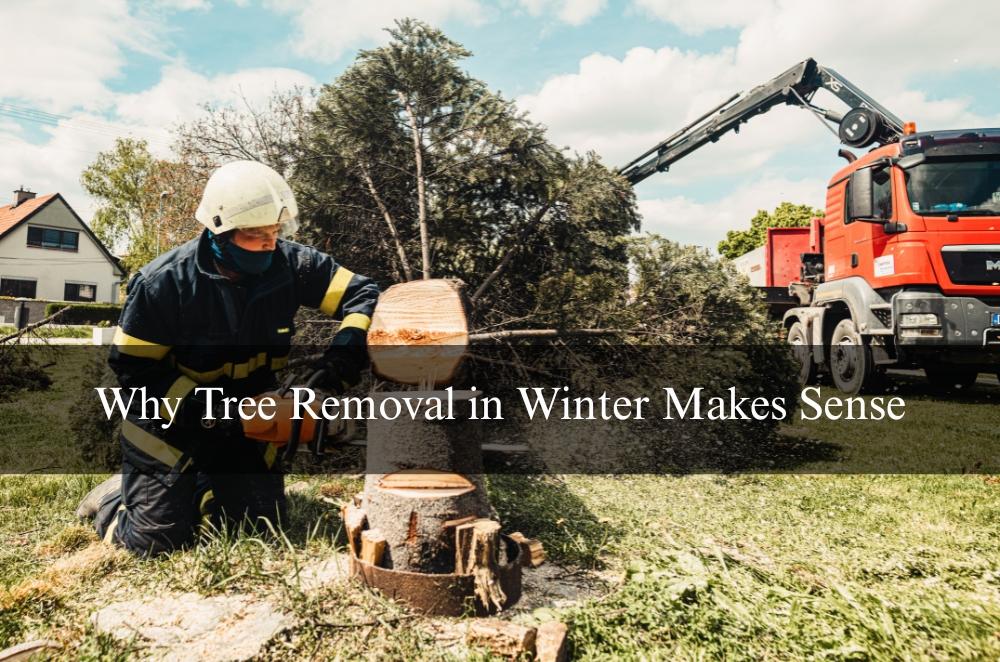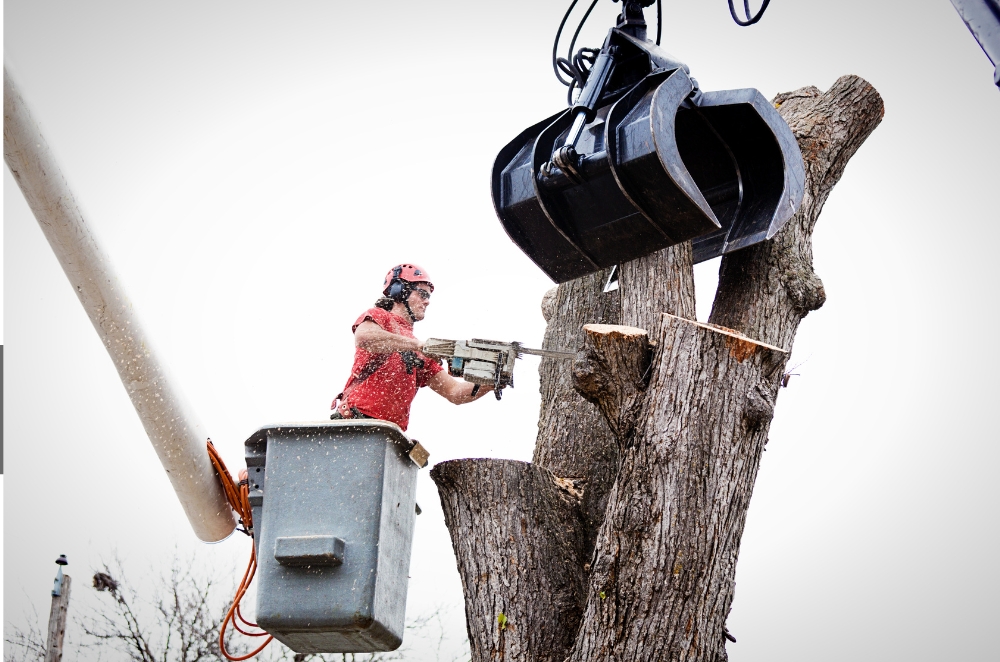Why Tree Removal in Winter Makes Sense

Tree work isn’t just revving up a saw and cutting things down. It’s more involved than that. Timing, the team, what sort of tree it is, where it’s leaning, what’s under it — it all matters. And funny enough, the colder months? That’s actually when a lot of the smart work happens.
Most people only think about calling someone in after a storm or when a branch hits the fence. But winter’s different. Things slow down. Trees go quiet, which makes it the perfect time to get ahead of the mess. That’s also when tree removal services can do their best work — less disruption, better access, fewer surprises, especially in Melbourne, where a bit of planning can go a long way. Get it sorted now, and there’s less to worry about when spring hits and everything starts going wild again.
Why winter works for tree removal
When trees are dormant — typically from June to August in Australia — they slow down biologically. That’s good news for arborists. Why?
-
Fewer leaves make structural issues easier to spot
-
Tree diseases are less active, so infections don’t spread as easily
-
Ground conditions are often firmer, reducing lawn damage from equipment
-
Wildlife disruption is minimised — nesting has mostly finished
One arborist I spoke to mentioned that winter gives them “a cleaner canvas.” You can see the branch structure clearly and make decisions without the guesswork that comes with heavy foliage.
Understanding safety obligations
Here’s something we learned the hard way: tree work isn’t just physical — it’s highly regulated. Whether it’s pruning overhanging limbs or full-scale removal, safety is non-negotiable.
-
Personal protective equipment (PPE)
-
Site assessments and traffic controls
-
Qualified supervision during elevated work
-
Equipment inspections and safety documentation
These aren’t just red tape. They’re there because tree removal is one of the most dangerous trades in the country. And depending on where you live, specific Melbourne tree regulations may apply, especially when protected species or council-managed trees are involved.
What happened when we didn’t hire a pro
A few years back, we had a spotted gum in the back corner that looked a bit off. Not rotten exactly, but definitely leaning. We called a mate’s “handyman” friend who had a ute and a saw. Bad call. He misjudged the fall angle and nearly clipped the shed. No injury, thankfully, but the root system tore through an irrigation pipe and left us with a bigger mess than we started with.
That experience taught us to ask more questions. From then on, we started paying attention to certified arborist tips when planning any serious work.
What to ask before you book
Even in winter — when arborists may have fewer bookings — don’t skip due diligence. Here are five things to ask before committing to any tree work:
-
Are you certified? (Look for AQF Level 3 qualifications in arboriculture)
-
Do you have insurance? (Public liability and workers’ compensation)
-
Will you provide a written quote and scope of work?
-
Do you notify neighbours or the council if needed?
-
How will the site be left? (Clean-up matters!)
A good arborist won’t flinch at these questions. They’ll respect that you’re doing your homework.
It’s not just about cutting — it’s about timing
Winter is also a smart time to assess trees that might cause trouble later. Once warmer weather hits, everything grows faster — and that includes risky limbs and root spread.
Here’s where strategic removals in winter help:
-
Storm prep: Weakened trees can be cleared before spring winds
-
Driveway/root damage prevention: Before sap flow picks up
-
Sunlight access: More light for the awning or solar panels
-
New planting: Opens space for spring garden redesign
An arborist I met in the eastern suburbs told me winter is when they “do the thinking jobs.” The removals that aren’t urgent — yet — but will be if left until October.
Local expertise matters
If you’re not sure who to call, don’t just Google “cheap tree lopper.” Look for local crews with proper credentials and established reputations. The right crew knows your suburb’s council rules, common tree types, and soil behaviour.
In fact, there’s a handy breakdown on how to choose a local arborist that outlines key differences between professional firms and fly-by-night operators.
These kinds of insights help avoid issues like permit breaches or rework down the line.
My experience with a pro crew
We finally called in a certified arborist last July after an eucalypt started dropping limbs. They walked the whole property, checked canopy health, looked for root movement, and even tested soil stability near the base.
The quote wasn’t the most affordable, but it came with full insurance, a clear plan, and clean execution. The job took half a day and left zero mess. Best of all? We haven’t had any issues since.
Sometimes, peace of mind is worth a few hundred dollars more.
The hidden benefits of winter pruning
Not every winter job is full removal. In many cases, trimming or thinning is the smart call. You might not notice the benefits right away, but they show up in spring:
-
Better fruiting in deciduous trees
-
Healthier regrowth patterns
-
Less competition for water and nutrients
-
Reduced limb breakage after storms
A local council arborist once said, “Winter is when good gardens get shaped. Spring just shows the results.”
Tree health checks: what to watch for
Not sure if your trees are in trouble? Winter makes it easier to spot:
-
Bark cracking or peeling
-
Fungal growth at the base
-
Hollow sounds when tapping the trunk
-
Deadwood or brittle branches
-
Signs of boring insects or sap bleed
Catching these early can save a tree or stop it from damaging your property. Either way, get it looked at.
What a written quote should include
Too many homeowners accept vague SMS quotes. That’s risky. A professional arborist should provide:
-
A full job description
-
Removal/pruning methods
-
Equipment used (crane, chipper, etc.)
-
Access requirements (neighbour’s yard, roof entry)
-
Cleanup commitments
-
Insurance and ABN details
It’s not about being picky — it’s about making sure both sides are clear, especially when there are power lines, fences, or public paths involved.
Winter is your window
By August, many arborists start to book up fast. As soon as the weather shifts, people start calling about overgrowth, light issues, or council notices.
If you know a tree needs work, don’t wait until it’s urgent. Use winter as your planning period. Rates are often more reasonable, and good crews have the time to do proper site inspections without pressure.
Some arborists even prioritise winter jobs for their winter safety tree removal tips, like working in daylight-limited conditions, managing frozen ground, and monitoring limb tension when trees are more brittle.
Final thoughts
Tree removal isn’t just about getting rid of something in the way. It’s about protecting your property, managing long-term risks, and keeping your outdoor space safe and usable. And winter? It’s the best time to make those moves — before the growth, storms, and heat of spring and summer return.
The right arborist doesn’t just cut. They guide, assess, and care for what’s left behind. And that’s the kind of value you’ll notice season after season.
- Information Technology
- Office Equipment and Supplies
- Cars and Trucks
- Persons
- Books and Authors
- Tutorials
- Art
- Causes
- Crafts
- Dance
- Drinks
- Film
- Fitness
- Food
- Jocuri
- Gardening
- Health
- Home
- Literature
- Music
- Networking
- Alte
- Party
- Religion
- Shopping
- Sports
- Theater
- Wellness


